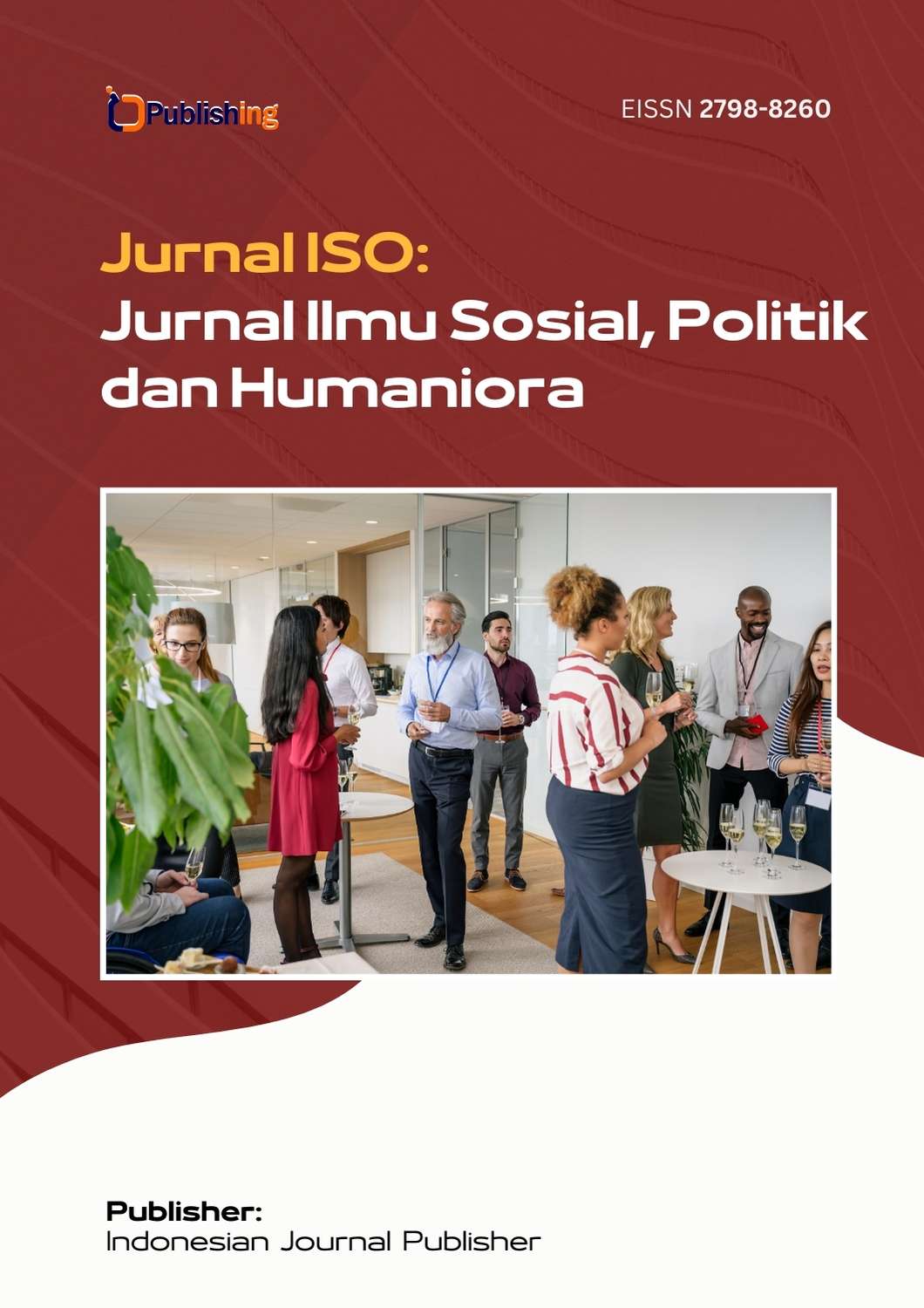Implementasi Smart Mobility Sebagai Model Pembangunan Berkelanjutan di Daerah Khusus Ibukota Jakarta
DOI:
https://doi.org/10.53697/iso.v5i1.2374Keywords:
Electric Bus, Jakarta Smart City, Traffic Congestion, Air Pollution, Transit Oriented Development (TOD)Abstract
This research aims to analyze the implementation of Smart Mobility as one of the key indicators of the Jakarta Smart City program to support sustainable development in the Province of DKI Jakarta. The study focuses on the application of Transit Oriented Development (TOD) and the operation of TransJakarta Electric Buses as concrete efforts to address traffic congestion and air pollution, which are major urban challenges. The research method employed is an empirical qualitative approach, relying on primary data obtained through interviews with relevant parties, as well as secondary data derived from legislation, official government documents, and academic literature. The research findings indicate that the development of TOD areas significantly contributes to improving public access to mass transportation and reducing dependence on private vehicles. Meanwhile, the use of TransJakarta Electric Buses represents an environmentally friendly transportation innovation that supports carbon emission reduction in DKI Jakarta, although it still faces obstacles in terms of fleet availability and investment. The implementation of this policy has shown positive impacts on shifting public behavior, as reflected in the increase of public transportation users from 18.86% in 2023 to 22.19% in 2024. However, there is still no definitive measurement of how much the policy has contributed to reducing air pollution levels. Therefore, periodic and comprehensive evaluations supported by accurate data are essential to ensure that this policy runs effectively and aligns with sustainable development goals. To realize a more environmentally friendly, sustainable and livable DKI Jakarta, collaboration between the government, private sector and the community is needed.
References
Agni, S. N., Djomiy, M. I., Fernando, R., & Apriono, C. (2021). Evaluasi Penerapan Smart mobility di Jakarta. Jurnal Nasional Teknik Elektro dan Teknologi Informasi, 10(3), 214–220. https://doi.org/10.22146/jnteti.v10i3.1730
Ahyar, J., et al. (2020). Metode Penelitian Kualitatif. Deepublish.
Badan Pusat Statistik. (2024). Provinsi DKI Jakarta dalam Angka 2024. BPS Provinsi DKI Jakarta.
Banister, D. (2008). The sustainable mobility paradigm. Transport Policy, 15(2), 73–80. https://doi.org/10.1016/j.tranpol.2007.10.005
Brundtland, G. H. (1987). Our Common Future: Report of the World Commission on Environment and Development. United Nations.
Cervero, R. (2002). Transportation in The New Urbanism: Policy and Planning Implications for Cities in The Twenty-First Century. Transportation Research Part A: Policy and Practice, 36(7), 567–587. https://doi.org/10.1016/S0965-8564(01)00023-4
Cervero, R. (2004). Transit-Oriented Development in The United States: Experiences, Challenges, and Prospects. Transit Cooperative Research Program.
Direktorat Jenderal Pengendalian Pencemaran dan Kerusakan Lingkungan. (2023). Laporan Kualitas Udara DKI Jakarta 2023. https://lingkunganhidup.jakarta.go.id/files/laporan_udara/LAPORAN_KUALITAS_UDARA_2023.pdf
Evans, G., & Cohen, S. (2004). Environmental Stress. Annual Review of Psychology, 55, 301–328. https://doi.org/10.1146/annurev.psych.55.090902.141934
Hardani, S. (2020). Metode Penelitian Kualitatif dan Kuantitatif. Pustaka Ilmu.
Indonesia2045. (2024). Visi Indonesia 2045: Pembangunan Berkelanjutan. https://indonesia2045.go.id/
Kaledi, S., Dewanti, D., & Herwangi, Y. (2019). Strategi pengembangan smart mobility berbasis transportasi publik di Kota Yogyakarta (Studi kasus: Transjogja). Region: Jurnal Pembangunan Wilayah dan Perencanaan Partisipatif, 14(1).
Katadata. (2024). Polusi Udara Rabu Sore: DKI Jakarta Terparah, Bagaimana Daerah Lain? https://databoks.katadata.co.id/layanan-konsumen-kesehatan/statistik/7da9b4bbddcde72/polusi-udara-rabu-sore-dki-jakarta-terparah-bagaimana-daerah-lain-rabu-14-februari-2024.com
Kementerian Agraria dan Tata Ruang/Badan Pertanahan Nasional. (2017). Peraturan Menteri Agraria dan Tata Ruang/Kepala Badan Pertanahan Nasional Nomor 16 Tahun 2017 tentang Pedoman Penyusunan Rencana Tata Ruang Wilayah Nasional.
Kementerian Lingkungan Hidup dan Kehutanan Republik Indonesia. (2022). Laporan Emisi Gas Rumah Kaca Indonesia 2022. KLHK.
Kementerian Lingkungan Hidup dan Kehutanan Republik Indonesia. (2020). Peraturan Menteri Lingkungan Hidup dan Kehutanan Republik Indonesia Nomor P.14/MenLHK/SetJen/Kum.1.7/2020 tentang Indeks Standar Pencemar Udara.
Kementerian Lingkungan Hidup dan Kehutanan. (2023, August 14). Uji emisi Dan Kendaraan listrik jadi solusi tekan polusi. PPID. https://ppid.menlhk.go.id/berita/siaran-pers/7311/uji-emisi-dan-kendaraan-listrik-jadi-solusi-tekan-polusi
M. Syamsudin. (2007). Operasionalisasi Penelitian Hukum. Jakarta: PT RajaGrafindo Persada, hal. 133.
Moleong, L. J. (2014). Metodologi Penelitian Kualitatif (Edisi Revisi). PT Remaja Rosdakarya.
Newman, P., & Kenworthy, J. (1999). Sustainability and Cities: Overcoming Automobile Dependence. Island Press.
Nugraha, D. P. (2013). Memaknai (kembali) empat pilar kehidupan berbangsa dan bernegara Indonesia. Hukum Ketatanegaraan, 331.
Pemerintah Provinsi DKI Jakarta. (2017). Peraturan Gubernur Provinsi DKI Jakarta Nomor 44 Tahun 2017 tentang Pengembangan Kawasan Berorientasi Transit (TOD).
RS Pondok Indah. (2024). Polusi Udara dan Risiko Gangguan Jantung. https://www.rspondokindah.co.id/id/news/polusi-udara-dan-risiko-gangguan-jantung
SILIKA. (2024). Informasi Kualitas Udara Jakarta. https://silika.jakarta.go.id/udara
TomTom. (2024). TomTom Traffic Index 2024. https://www.tomtom.com/traffic-index/
United Nations. (2015). Transforming Our World: The 2030 Agenda for Sustainable Development. https://sdgs.un.org/
Universitas Gadjah Mada. (2024). Polusi Jakarta Peringkat 1 di Dunia: Bagaimana Dampaknya Pada Kesehatan? https://ohce.wg.ugm.ac.id/polusi-jakarta-peringkat-1-di-dunia-bagaimana-dampaknya-pada-kesehatan/
Downloads
Published
How to Cite
Issue
Section
License
Copyright (c) 2025 Cherish Young, Felicia Evelyn, Dwi Putra Nugraha

This work is licensed under a Creative Commons Attribution 4.0 International License.













